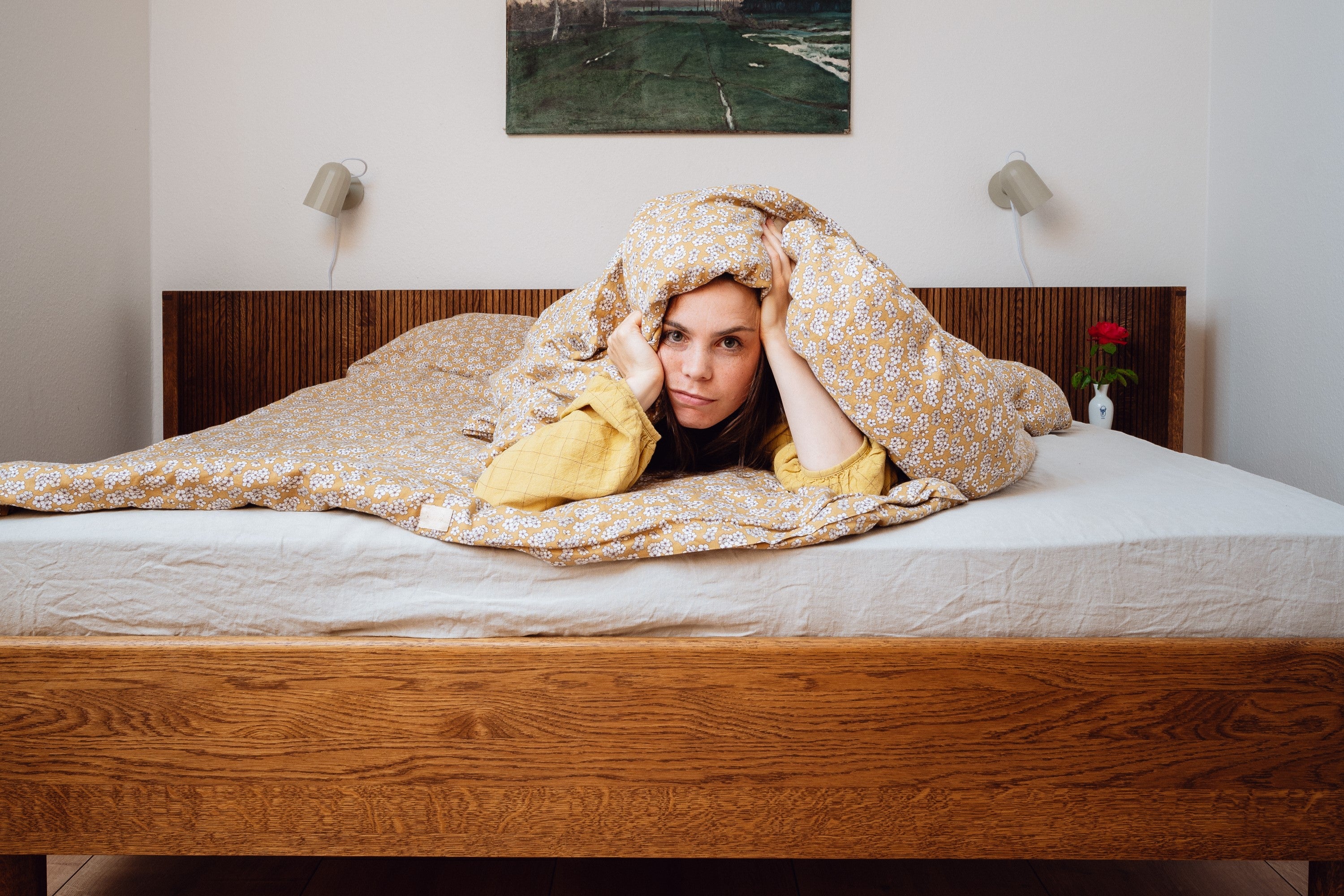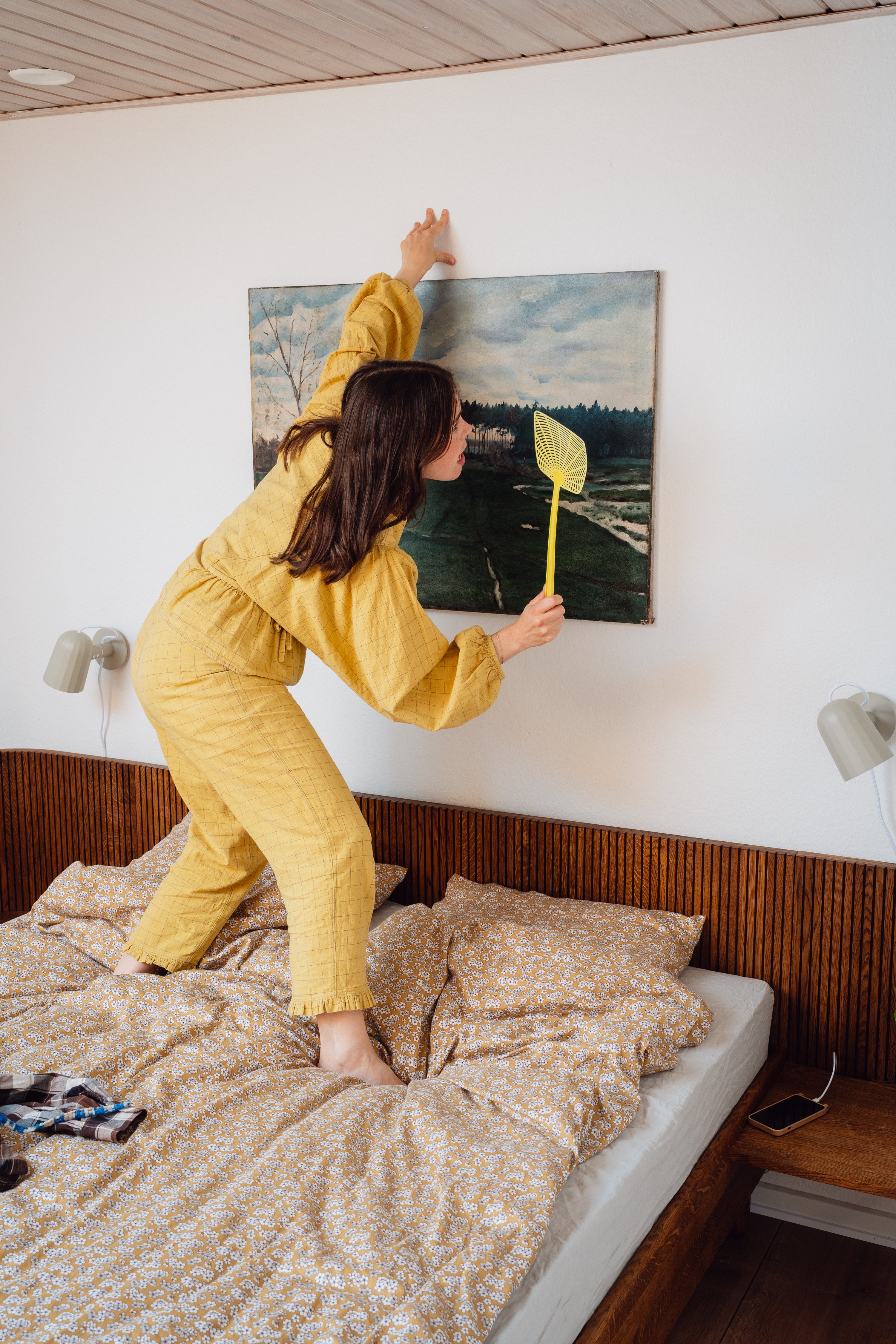When we become adults and start knowing so much about life and the world, our curiosity feels satisfied — and we stop being surprised. But by keeping the child within us alive, we can see the world anew. We can experiment, play with materials and form, and solve problems in ways that haven’t been imagined before.
INTERVIEW
Ola Mirecka & TAMO
Your work often draws on everyday life and a sense of childlike sensitivity. Where do these interests come from?
Each project and piece of work is its own story. In the objects I create, I try to embed a narrative. Sometimes it’s quite literal — for example, in my hand-painted Greek vases that depict scenes from life in the 21st century. Using the recognizable icon of black- and red-figure vases from ancient Greece, I create my own versions of these vessels and paint on them what I would like to pass on to future generations. It’s a kind of time capsule play.
Many of my projects are connected to the idea of play. Beyond simply recommending play as a daily mood booster, I also see it as a valuable design tool. The sensitivity of children — their fresh perspective on a world they’re only beginning to understand — is incredibly inspiring.
As adults, we accumulate knowledge about life and the world, and our curiosity starts to feel satisfied. We stop being surprised. But by keeping the child within us alive, we can see the world anew. We can experiment, play with materials and form, and solve problems in ways that haven’t yet been imagined.
What are your favorite at-home rituals?
Our evening ritual is reading books together. Unfortunately, our daughters (6 and 2 years old) currently prefer completely different kinds of literature — and if we try to read to them at the same time, it usually ends in biting and hair-pulling. So we read separately: I usually read something in Polish with the older one, and my husband reads in Danish with the younger one. Or the other way around. And then we all fall asleep together.
Another ritual is making music as a family. Rasmus comes up with a melody on the guitar, and the girls sing improvised songs, telling stories from their — still quite short — lives. It's the perfect way to wind down, even if they’re jumping from one couch to another while singing.
Is designing your new space — your home in Denmark — a collaborative project? Does each family member get to add their own “building blocks”?
I’m definitely the boss of this project! And I love it. I can spend whole nights planning where things will go and what should hang where. All the changes are discussed together with Rasmus — he has a good eye and great taste, so we make decisions jointly.
I love assembling, drilling, painting — and I have the space to do it. Sometimes our older daughter helps out too, because she’s really into it. The kids contribute their own kind of creativity — the mess!
The house is adapted to their needs. We have play areas not just in their rooms, but throughout the house. I accepted a long time ago that when you have kids, toys will be everywhere. I try to include that reality in how I design the space, so the house works for everyone.
Do you remember your first LEGO set, and do your kids get a chance to play with it — or is it more of a display piece on the shelf?
I love bringing home the sets I’ve designed, and my kids absolutely love playing with them. I’ve managed to set aside a few unopened boxes as keepsakes, but honestly, the biggest joy comes from watching my children play with something I created.
What has been the biggest challenge in your artistic journey — and how did you overcome it?
The biggest challenge was definitely financial. During my studies in London, things were really tough in that regard — the cost of living, tuition fees, and expenses for materials. Luckily, I had the support of my family, and they helped me a lot during that time.
I often had to limit my projects to what I could afford — to materials I could buy without having to skip meals at the end of the month. At the same time, I had classmates at RCA who came from incredibly wealthy families and faced no such limitations. That contrast was hard to navigate — I had no shortage of ideas, but not always the means to execute them.
Having a budget for making mistakes and trying things out is a real luxury in design. But on the other hand, limitations are a great driver of creativity and resourcefulness. And that’s something every designer deals with in their everyday work. So I got through those (amazing) years and learned how to manage my resources wisely.
What part of the Polish spirit have you managed to bring with you to Denmark?
Our family is Polish-Danish, so it’s a real mix. We live in Denmark, but we have a very close relationship with our family in Poland — Warsaw is our second home. My children and my husband are huge fans of Polish soups.
At home, we speak three languages: Danish, Polish, and English. We explore traditions from different countries, and our older daughter just started attending an international school where she has friends from all over the world.
Our home is full of Polish furniture, ceramics, clothes, and shoes — so I’d say we’ve brought quite a bit with us, not just the spirit!










